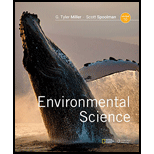
The process of removing tightly held oil and natural gas through horizontal drilling and hydraulic fracturing, or fracking. The role of these technologies in greatly increasing the production of oil and natural gas in the United States.
Answer to Problem 1CR
The process of horizontal drilling involves drilling a vertical well deep into the earth, turning the flexible shaft of the drill, and then horizontal drilling. In the case of hydraulic fracturing, the shale rock is fractured by high-pressure pumps and a mixture of water, sand, and chemicals are pumped through holes in the underground well pipe. These technologies have reduced the cost of oil extraction in the United States and reduced its dependency on oil imports.
Explanation of Solution
The oil and gas producers combined two extraction technologies, horizontal drilling, and hydraulic fracturing or fracking, to reduce the cost of oil extraction.
The process of horizontal drilling involves:
(i). Drilling a vertical well deep into the earth.
(ii). Turning the flexible shaft of the drill.
(iii). Horizontal drilling to gain access to multiple oil and natural gas deposits.
The hydraulic fracturing or fracking is used to remove the oil and natural gas trapped in the shale rock. The shale rock is fractured by high-pressure pumps that force a mixture of water, sand, and chemicals through holes in the underground well pipe. A mixture of oil and natural gas and some amount of slurry flows out of the cracks when the pressure is released. The oil and gas with slurry are pumped to the surface through the well pipe. The returning slurry also contains some potentially harmful chemicals. The slurry is again injected under high pressure into deep underground wells and sent to sewage treatment plants.
These technologies are greatly increasing the production of oil and natural gas in the United States and also reducing the cost of oil extraction. The United States is utilizing these technologies to reduce its dependency on oil imports. The increased supply has reduced the price of natural gas. It has accelerated a shift from coal to natural gas for generating electricity in the United States.
Want to see more full solutions like this?
Chapter 13 Solutions
Environmental Science (MindTap Course List)
- Please answer all parts of the question and show all workarrow_forward1. The field of hydrogeology includes: a. soil water movement b. rainfall runoff and flood generation c. placement of water wells to optimize the quantity and quality of water supplies d. all of the above e. a and c 2. Groundwater occurrence and movement has no direct influence on: a. earthquake activity b. land subsidence c. land slide potential d. hydraulic conductivity e. soil formation f. none of the above 3. In terms of Earth's water budget, groundwater ranks a. higher b. lower 4. Ultimately, the hydrological cycle is driven by: a. geothermal energy fluxes toward Earth's surface b. orographic rainfall due to abrupt changes in elevation c. solar energy fluxes toward Earth's surface d. adiabatic cooling in the atmosphere 5. In the equation below, the variable "Var" refers to: a. void ratio b. pressure head c. hydraulic conductivity d. intrinsic permeability than glaciers and ice caps: P Var = p.garrow_forwardDeep water- waves with constant wavelength Wave movement Approaching shore- waves touch bottom (wavelength decreases) Surf zone (breakers form) Waves touch bottom as they encounter water depths that are less than half a wavelength C E B 00000 00000 Depth is >½ wavelength 0000 0000 Velocity decreases (wave height increases)arrow_forward
- Activity 12.1: Wave Characteristics Pg 200 1. Refer to Figure 12.1 and select the letter that identifies each of the following.wave crestwave troughwavelengthwave heightwave base 2. Below what depth would a submarine have to submerge so that it would not be swayed by surface waves with a wavelength of 24 meters?____ mActivity 12.2: Deep Versus Shallow Water Waves Pgs 201-202Refer to Figure 12.1 to answer the following questions. 1. Do particles in deep-water waves trace out circular or elliptical paths? 2. Near the shore in shallow water, do water particles trace out circular or elliptical 3. In shallow water, are water particles in the wave crest ahead of or behind those at the bottom of the wave? 4. As waves approach the shore, do their heights increase or decrease? Do wavelengths become longer or shorter? 5. In the surf zone, is the water in the crest of a wave falling forward or standing still? 6. What is the velocity of deep-water waves that have a wavelength of 46 meters and a…arrow_forwardSubject: Hydrogeology Please answer the question correctly and in detail and show all workarrow_forwardSubject: Hydrogeology Please answer both parts of the question correctly and in detail and show all workarrow_forward
 Applications and Investigations in Earth Science ...Earth ScienceISBN:9780134746241Author:Edward J. Tarbuck, Frederick K. Lutgens, Dennis G. TasaPublisher:PEARSON
Applications and Investigations in Earth Science ...Earth ScienceISBN:9780134746241Author:Edward J. Tarbuck, Frederick K. Lutgens, Dennis G. TasaPublisher:PEARSON Exercises for Weather & Climate (9th Edition)Earth ScienceISBN:9780134041360Author:Greg CarbonePublisher:PEARSON
Exercises for Weather & Climate (9th Edition)Earth ScienceISBN:9780134041360Author:Greg CarbonePublisher:PEARSON Environmental ScienceEarth ScienceISBN:9781260153125Author:William P Cunningham Prof., Mary Ann Cunningham ProfessorPublisher:McGraw-Hill Education
Environmental ScienceEarth ScienceISBN:9781260153125Author:William P Cunningham Prof., Mary Ann Cunningham ProfessorPublisher:McGraw-Hill Education Earth Science (15th Edition)Earth ScienceISBN:9780134543536Author:Edward J. Tarbuck, Frederick K. Lutgens, Dennis G. TasaPublisher:PEARSON
Earth Science (15th Edition)Earth ScienceISBN:9780134543536Author:Edward J. Tarbuck, Frederick K. Lutgens, Dennis G. TasaPublisher:PEARSON Environmental Science (MindTap Course List)Earth ScienceISBN:9781337569613Author:G. Tyler Miller, Scott SpoolmanPublisher:Cengage Learning
Environmental Science (MindTap Course List)Earth ScienceISBN:9781337569613Author:G. Tyler Miller, Scott SpoolmanPublisher:Cengage Learning Physical GeologyEarth ScienceISBN:9781259916823Author:Plummer, Charles C., CARLSON, Diane H., Hammersley, LisaPublisher:Mcgraw-hill Education,
Physical GeologyEarth ScienceISBN:9781259916823Author:Plummer, Charles C., CARLSON, Diane H., Hammersley, LisaPublisher:Mcgraw-hill Education,





